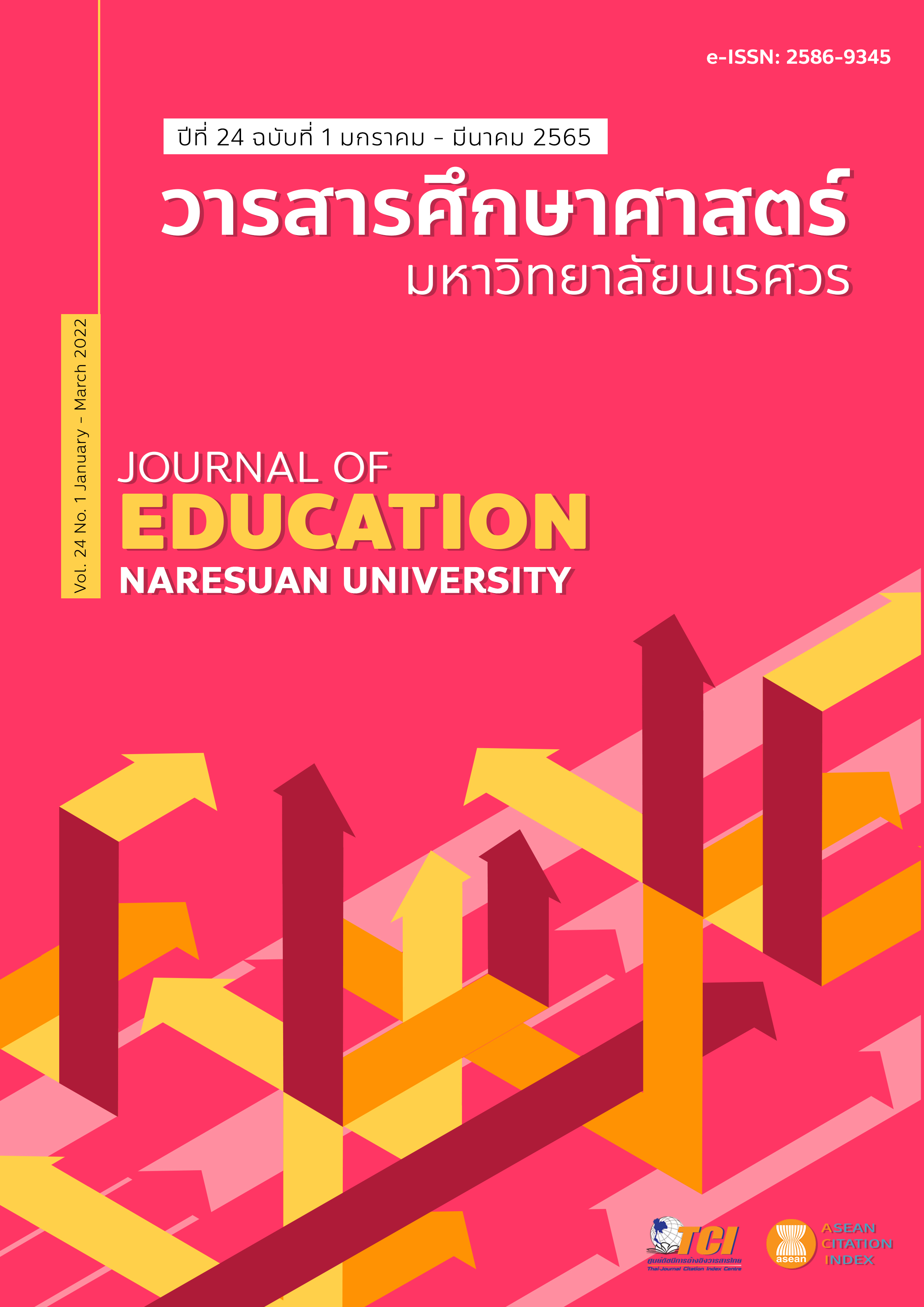A CONSTRUCTION OF POSITIVE THINKING TEST FOR HIGH SCHOOL STUDENTS การสร้างแบบวัดการคิดเชิงบวกสำหรับนักเรียนชั้นมัธยมศึกษาตอนปลาย
Main Article Content
Abstract
This research aims to conduct a positive thinking test for high school student and to investigate the qualities of the test in term of discrimination, reliability as well as content and construct validity. The norms are also added in order to identify the individual level of positive thinking. According to reviewing literature the positive thinking test for high school student had been constructed which is composed of two parts; demographic questions and the positive thinking test. The positive thinking test is composed of 6 components each including 42 questions relating to the positive thinking. The test is also efficiency both in term of content validity which IOC is more than 0.6 and discrimination which is significantly not equal zero. To confirm the validity of the model 466 samples had again randomly been selected. Most of which (73.6%) was female; 36.1%, 32.8%, and 31.1% of which came from Mattayom 6, 5 and 4, respectively. Most of the sampled students (53.6%) had GPA between 3.01- 4.00. In addition, the results of confirmatory factor analysis (CFA) indicate that the model of positive thinking test is significantly appropriate at 0.05 level having CFI = 0.994, TLI = 0.993, RMSEA = 0.013 and SRMR = 0.036. Furthermore, the proposed test, together with the norms (T-score) between T21 to T72, is productive and efficiency both in term of the reliability and validity with Cronbach’s alpha coefficient be 0.947.
Article Details

This work is licensed under a Creative Commons Attribution-NonCommercial-NoDerivatives 4.0 International License.
The owner of the article does not copy or violate any of its copyright. If any copyright infringement occurs or prosecution, in any case, the Editorial Board is not involved in all the rights to the owner of the article to be performed.
References
Naksin, S. (2009). Factor analysis of positive thinking of the third level students (Master thesis). Bangkok: Srinakharinwirot University. [in Thai]
Nakwatchara, W. (2000). Elegant lifestyle. Bangkok: Self-Development and Executive Institute. [in Thai]
Peiffer, V. (1992). Positive thinking: Everything you have always known about positive thinking but were afraid to put into practice. Rockport, MA: Element.
Peiffer, V. (2005). Positive thinking (N. Chonlakoop, Trans.). Bangkok: Bliss Publishing. [in Thai]
Phonsab, A. (2008). A study of the relationship between some factors and positive thinking of mathayomsuksa III students in Nonthaburi Educational Service Area I (Master thesis). Bangkok: Srinakharinwirot University. [in Thai]
Phuachoo, S. (2004). A developmental study on synthesis thinking and optimism of junior high school students in the Educational Area III (Master thesis). Bangkok: Srinakharinwirot University. [in Thai]
Pranorm, O. (2005). The power of word to the power of heart. Bangkok: Pimkum Press. [in Thai]
Rakmaneewong, Y. (2013). Depression and auto-negative thoughts, the roots of the problems. Journal of Nursing and Health Sciences Naresuan University, 7(1), 7-24. [in Thai]
Srijun, K. (2018). The Development of Self-esteem Inventory of 4th – 6th Grade Students. Journal of Education Srinakharinwirot University, 13(1), 1-14. [in Thai]
Srithipun, P., Chaleerakand, W., Phantong, W., & Suksawang, P. (2016). Factors affecting positive thinking in the work of teachers and education personnel: MIMIC analysis. Veridian E-Journal Silpakorn University, 9(1), 1336 – 1348. [in Thai]
Supannopaph, P., Charoensuk, O., Ong-Art Naiyapatana, O., & Ngudgratoke, S. (2017). A factor analysis of the positive thinking characteristics for undergraduate students of Silpakorn University. Veridian E-Journal Silpakorn University, 10(1), 1072-1086. [in Thai]
Ventrella, S. W. (2002). The power of positive thinking in business: Ten traits for maximum results. New York: Free Press.


